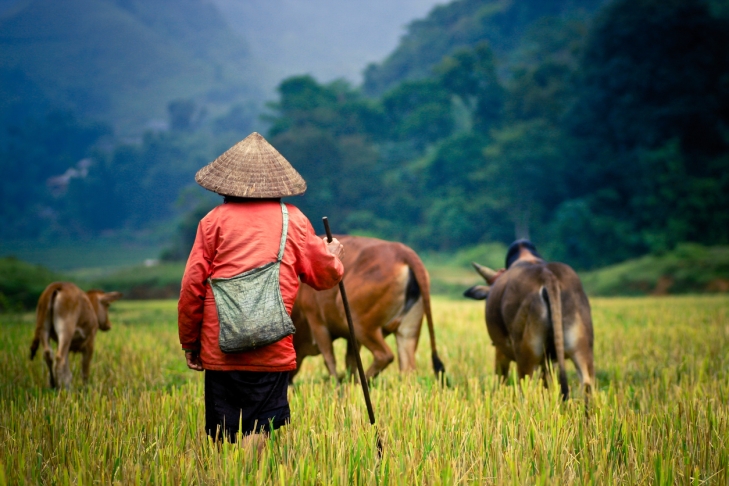
Leon Qiu started microfinance lending startup Daung Capital to help the unbanked in Myanmar. Can he adequately help the farmers there?
Leon Qiu established microfinance lending start-up Daung Capital in 2017 to serve low-income customer in Myanmar who typically had little access to formal financial services. Daung provided short-term loans for purchasing motorbikes, and educational loans to students from poorer households among other things.
Two years later, Daung launched a loan product for farmers, whose ability to repay were tied to the harvest. Many farmers borrowed every year from informal moneylenders at interest rates as high as 60 percent, and paid them off during the harvest season, leaving them with little balance to cater for other necessities. A bad crop year, a natural disaster or even a family emergency could also affect loan repayment chances dramatically.
Qiu had to take in various constraints in designing the loan product, ranging from credit risk assessment to ethical obligations. Qiu and his team had to consider the usefulness of traditional risk structure and machine learning algorithms to mitigate the inherently uncertain nature of farming. Is it even possible to do so?
Yes, it works
Microfinance institutions (MFIs) serve approximately 1.45 million in Myanmar, but they operated mostly in developed areas of the country such as Yangon, Mandalay, and Ayeyarwady. MFIs avoided operating in smaller towns and villages because the lower population densities resulted in higher operating costs, and there was a lack of reliable infrastructure and communication networks.
Daung’s loan schemes are based on a B2B2C lending model. The company does not work with the customer directly but through dealers, factories and SMEs. Dealers and SME/factory partners comprise motorcycle renting and selling agencies, factories, small businesses and educational institutes.
The MFI had several loan products, of which motorcycle loans and cash advances to salaried workers were the two most popular. A motorbike costs about US$263, which is a big sum to an average working-class individual in Myanmar earning some US$300 per month with little to no savings. Qiu and his team came up with a rent-to-own model (RTO), allowing them to take up better-paying jobs in nearby towns and villages.
Daung worked with motorcycle dealers across the country to give end-customers immediate access to a motorbike with a small deposit. The RTO model offered low monthly repayments (typically from six months to a year), with ownership of the vehicle was transferred to the customer upon full loan repayment.
For motorcycle loans, Daung had two contractual agreements, one with the dealer, and another with the borrower. Qiu explains:
“We do not bear the risk of the borrower not paying back; the dealer actually takes that risk. However, we do need eyes on the end-borrower to make sure that we do not fund motorcycles that do not exist or borrowers that do not exist. To implement such monitoring, we depend on technology. For most buyers, such a purchase is usually their first formal loan, and hence the propensity to pay back is higher – the willingness to pay is high. Moreover, the agents we deal with filter the customers they are comfortable extending the loan to, who have a steady source of income and will be able to repay over a few months.”
Helping the farmers
A steady source of income is the last thing one would associate with small farmers in Myanmar. Besides the inherent uncertainty that comes with the weather and natural disaster such as pestilence, a bad crop year could take a farmer up to six years to recover financially. Fluctuations in market prices of crops and bad weather sometimes force farmers to pre-sell or abandon a crop or to even choose to migrate to cities to find other work.
To ensure a good harvest, farmers need high-quality seeds. Farmers buy their seeds from the rice mill but they often lack the capital to do so, and thus have to turn to loan sharks who charge up to 60 percent interest. After paying off their hefty debts, they typically had little money left, even in a good harvest year.
The main alternative form of funds was the Myanmar Agricultural Development Bank (MADB), but its loans were designed with only the rice farmer in mind. The loan scheme provided by MADB offered loans to farmers at the rate of US$100 per acre, whereas the cost of producing rice was an average of US$150.
What is perhaps worse is that the loan is issued after the seed-sowing period with a loan term that is due just after harvest time. This instigates a vicious cycle of borrowing, forcing farmers to take loans from other sources to pay back the agricultural loans. Existing MFI loan schemes, on the other hand, required frequent repayment (sometimes bi-weekly). Such constraints had triggered more informal lending habits amongst farmers.
How could Qiu ensure that the new loan product for farmers met all their needs? How could Daung mitigate the credit risks that arose from executing such specialist products for the low-income populace? Could it use advanced data analytics and machine learning to monitor and spearhead the implementation of credit risk processes more effectively?
This is an adapted version of the SMU Case, “Daung Capital: Managing the Credit Risk Challenges of Microfinance in Myanmar”. To see the full case, please click on the following link: https://cmp.smu.edu.sg/case/5406.
Follow us on Twitter (@sgsmuperspectiv) or like us on Facebook (https://www.facebook.com/PerspectivesAtSMU)
Last updated on 30 Jun 2022 .

